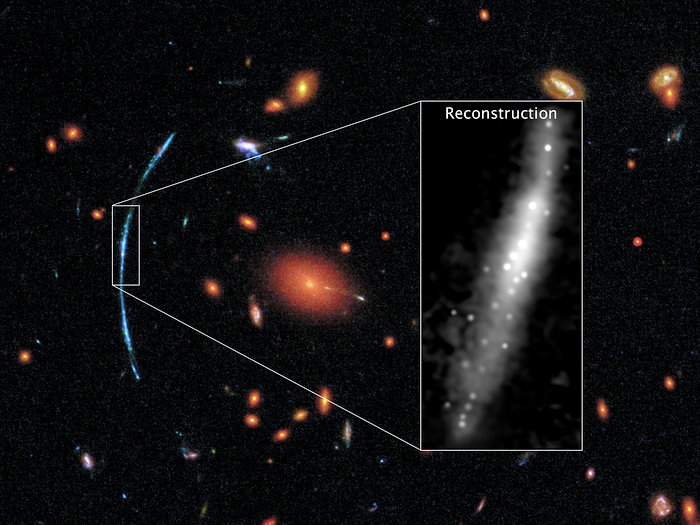Hubble pushed beyond limits to spot clumps of new stars in distant galaxy
In this Hubble image of a distant galaxy cluster, a spotty blue arc stands out dramatically against a background of red galaxies. That arc is actually three separate images of the same background galaxy. The background galaxy has been gravitationally lensed, its light magnified and distorted by the intervening galaxy cluster.
By using the magnifying power of this natural cosmic lens, astronomers have been able to study the background galaxy in intimate detail. Through sophisticated computer processing, they determined how the galaxy’s image has been warped by gravity. The image at right shows how the galaxy would look to Hubble without distortions.
It reveals a disc galaxy containing clumps of star formation that each span about 200 to 300 light-years. This contradicts theories suggesting that star-forming regions in the distant, early Universe were much larger, 3000 light-years or more in size.
Links
Credit:About the Image
NASA caption
| Id: | opo1727a |
| Type: | Collage |
| Release date: | 10 July 2017, 12:00 |
| Size: | 1800 x 1350 px |
About the Object
| Name: | SDSS J1110+6459, SGAS J111020.0+645950.8 |
| Type: | Early Universe : Galaxy : Grouping : Cluster Early Universe : Galaxy : Type : Gravitationally Lensed Early Universe : Cosmology : Phenomenon : Lensing |
| Category: | Galaxies |
Wallpapers
Colours & filters
| Band | Wavelength | Telescope |
|---|---|---|
| Optical C | 390 nm |
Hubble Space Telescope
WFC3 |
| Optical V | 606 nm |
Hubble Space Telescope
WFC3 |
| Optical Z | 1.05 μm |
Hubble Space Telescope
WFC3 |
| Infrared H | 1.6 μm |
Hubble Space Telescope
WFC3 |
